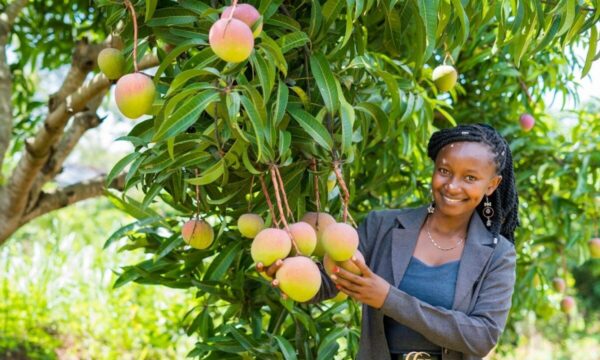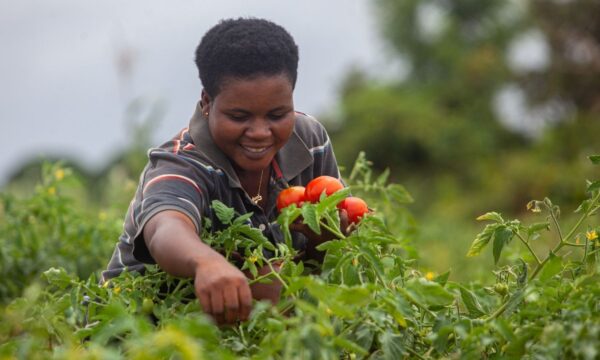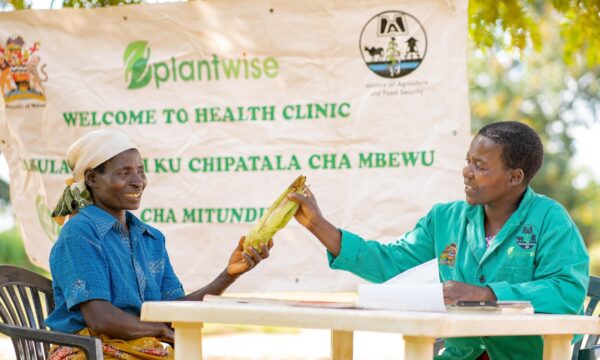Without healthy crops, food systems crumble, livelihoods suffer, and communities become more vulnerable to food insecurity. PlantwisePlus supports countries in strengthening plant health systems and improving food quality, quantity, and security. Plant clinics are central to this approach, providing farmers with diagnosis and treatment advice for any crop problem.

In Uganda and Kenya, PlantwisePlus is embedding these clinics within the broader One Health approach. These new crop-livestock clinics, or “joint clinics,” don’t just help farmers diagnose and treat crop and animal problems; they also promote healthier practices that safeguard people, animals, plants and the environment.
In this interview, we speak with Solveig Danielsen, Senior Project Scientist, One Health and Research at CABI, about why plant health deserves a seat at the One Health table.
Please tell us a bit about yourself
I am a senior project scientist supporting One Health work across CABI, including crop-livestock clinics and CABI’s One Health Hub.
The One Health aspect of plant health evolved organically from the work with plant clinics and plant health systems in various countries. The driver for this initiative was farmers’ demand for advice on both plants and animals, but these “joint clinics” became an entry point for addressing One Health issues at the crop, animal, human, and environment interface.
Can you explain what “One Health” means?
One Health is a mindset, a way of working collaboratively across sectors and disciplines, to protect health and address interlinked health challenges across the domains of plants, animals, humans and the environment. It is about creating synergies, better solutions, deeper knowledge, and using resources more efficiently.
Why do you think plant health deserves a seat at the One Health table?
Plants and plant health are the foundation for our lives and livelihoods, the health and well-being of animals, and ecosystems. We rely on healthy plants for food and feed, nutrition, carbon sequestration, medicine, biodiversity, and for healthy and balanced ecosystems. Conventionally, One Health focuses on zoonotic diseases and antimicrobial resistance (AMR). Yet, the health of plants, animals, people and the environment is interlinked in so many ways, meriting a broader view on One Health.
How do plant health problems affect people’s lives?
Every year, farmers lose food and income due to pests and diseases, as well as abiotic problems such as drought, floods, erosion and poor soil health. Mycotoxins in food and feed affect the health of people and animals who consume them. And over- and misuse of pesticides pose a health burden to plants, animals, humans, and ecosystems.
What benefits have there been in Uganda and Kenya where partners run crop-livestock clinics with CABI support?
We have seen a number of benefits from the joint clinics in Uganda and Kenya, both on the farmer and provider side. Joint clinics help farmers get faster, more holistic advice while enabling crop and livestock officers to pool resources and reach more people. These spaces also foster knowledge exchange — for example, crop experts advising on how to grow better fodder crops to support livestock health. Importantly, the joint clinics have proven to be a valuable avenue to raise awareness about the broader One Health implications of plant and animal health management practices.
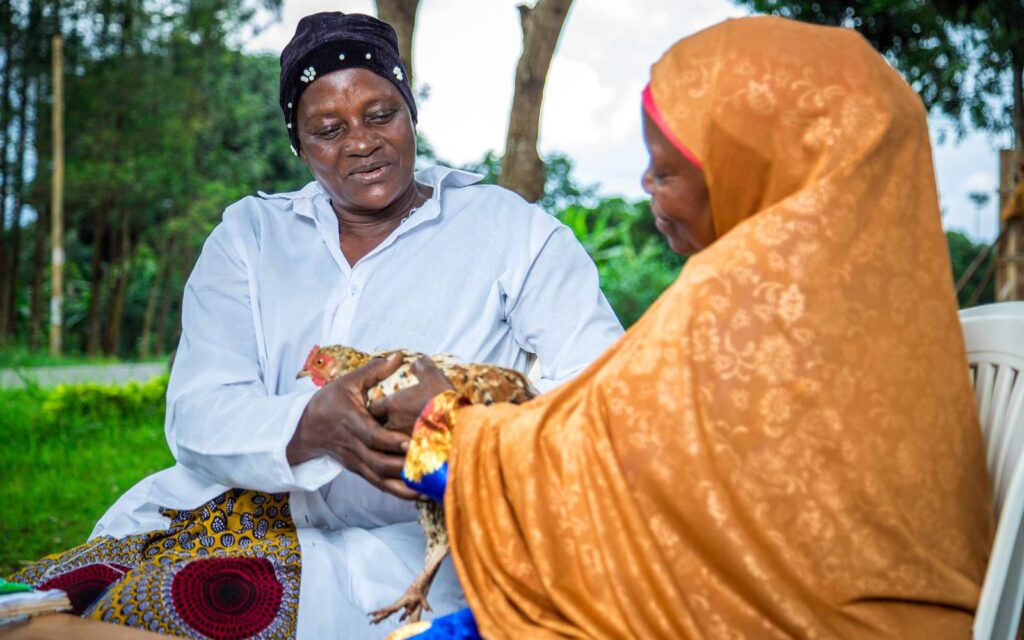
What are farmers most concerned about when they visit crop-livestock clinics? Are they aware of the broader health connections?
Farmers typically come to a plant (or crop-livestock) clinic when a problem is visible, when there are clear symptoms of a pest or when a crop or animal is just not thriving. Sometimes treatment, or mitigation, is possible, but often it isn’t. So, teaching preventative measures is an important role of the clinics. Farmers often recognize some health risks — like pesticide exposure or the need to boil milk — but other connections, like the impact of mycotoxins in food and feed or the spread of antimicrobial resistance, are less well understood.
What would better integration of plant health into One Health look like?
The first step could be to ask who/what sectors are affected by plant health issues, and how? How do these sectors deal with issues originating in plant health? Who are the main actors involved? The next step is then to explore where the gaps and opportunities are for joint action on priority issues. For example, health providers and extension workers might be able to align actions to reduce pesticide risks. And in areas where invasive plants are known to harbour disease vectors, such as malaria mosquitoes, a collaboration between public health and environmental agencies would be essential. Also, are there policies and regulations that could be better aligned across sectors, for example, on biosecurity and pesticide monitoring?
What changes are needed in how plant health is treated within the One Health framework?
First of all, the “plant health world” needs to show, through concrete action and evidence, what it means to apply a One Health approach, when it is needed and when it is not, and how it adds value compared to single-sector action. Innovative alliances, as well as openness and flexibility among funders, decision-makers and other key stakeholders, are needed to break conventional ways of working.
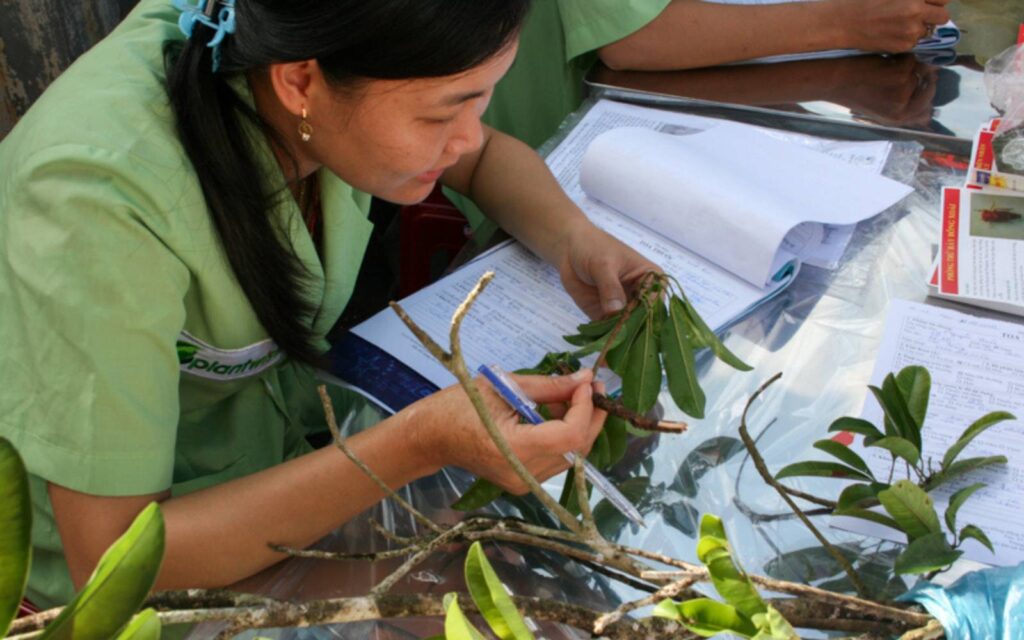
What is the outlook for plant health and its place in global health?
I see a lot of momentum for plant health to gain a strong place in the global scene. The climate and biodiversity crises have drawn attention to the crucial roles of plants and plant health for the health and well-being of the planet and its living beings. Plant health is increasingly taken more seriously in the context of global health, and a broader One Health integration is taking place. Efforts to harmonize international standards for the trade in food, animals and animal products and plants and plant products are being undertaken by Codex, IPPC and WOAH. The FAO and IPPC are proactively driving global debates about plant health and One Health. There is still a long way to go, but let’s remember that just 10 years ago, plant health was hardly ever mentioned in the context of One Health.
And finally, what message would you like to share for International Day of Plant Health?
Plant health is not a standalone health domain. Let’s make ourselves relevant to other health domains by nurturing collaboration, seeking synergies and solutions to problems that are interlinked by nature.
Solveig Danielsen is an author on the recent paper, published in the CABI One Health Journal, ‘Worlds apart: Plant health and One Health and a path to convergence’
The United Nations designated 12 May the International Day of Plant Health. In 2025, the theme is importance of plant health in One Health to spotlight how healthy plants are necessary and critical to the health of humans, animals and the environment.
PlantwisePlus gratefully acknowledges the financial support of the Directorate-General for International Cooperation, Netherlands (DGIS); European Commission Directorate General for International Partnerships (INTPA); UK International Development from the UK government; and the Swiss Agency for Development and Cooperation (SDC).
Related News & Blogs
CABI Academy plant health management courses are helping to improve extension support
CABI Academy is a global learning hub for people who want to boost their expertise in agriculture under the CABI-led global programme, PlantwisePlus. Since 2020, it has been home to a range of interactive, self-paced online courses, including Crop Pest…
19 December 2025

